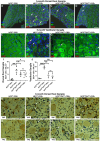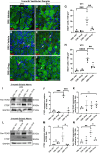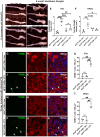Correction to: Inhibition of YAP/TAZ-driven TEAD activity prevents growth of NF2-null schwannoma and meningioma
- PMID: 39576720
- PMCID: PMC11884762
- DOI: 10.1093/brain/awae353
Correction to: Inhibition of YAP/TAZ-driven TEAD activity prevents growth of NF2-null schwannoma and meningioma
Figures




Erratum for
-
Inhibition of YAP/TAZ-driven TEAD activity prevents growth of NF2-null schwannoma and meningioma.Brain. 2023 Apr 19;146(4):1697-1713. doi: 10.1093/brain/awac342. Brain. 2023. PMID: 36148553 Free PMC article.
Publication types
LinkOut - more resources
Full Text Sources
Miscellaneous

